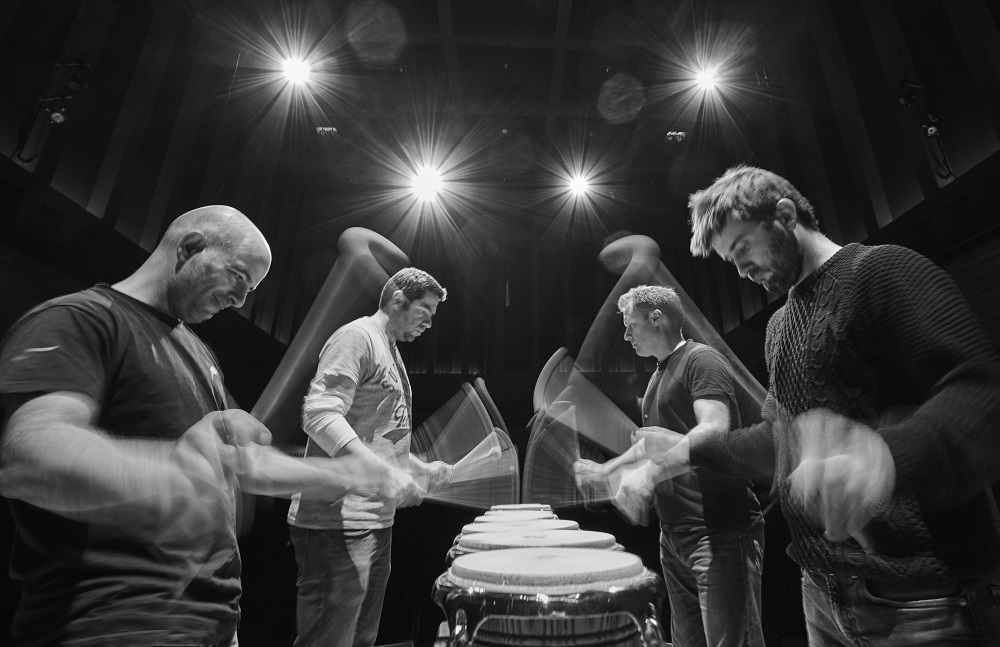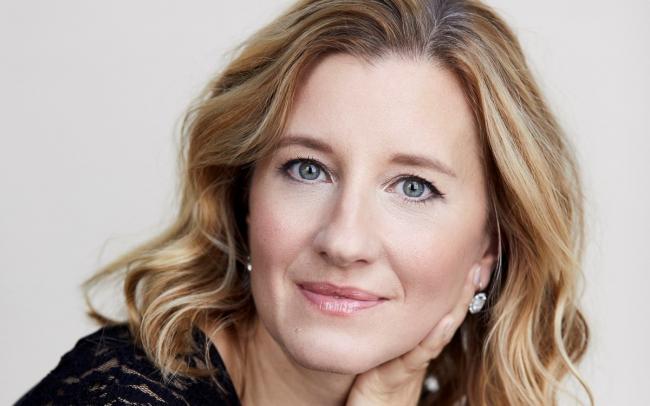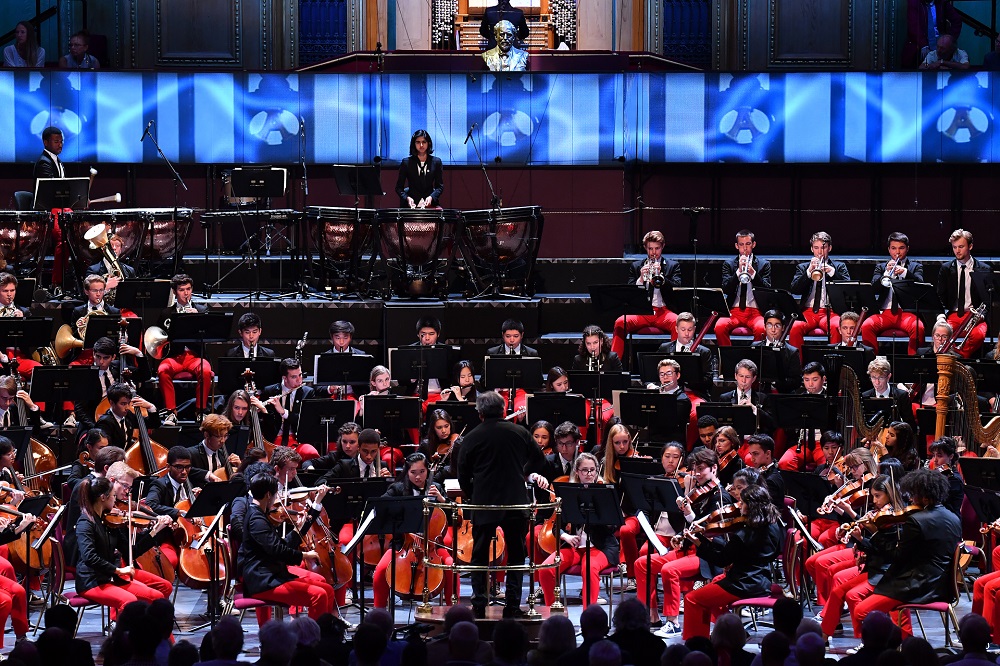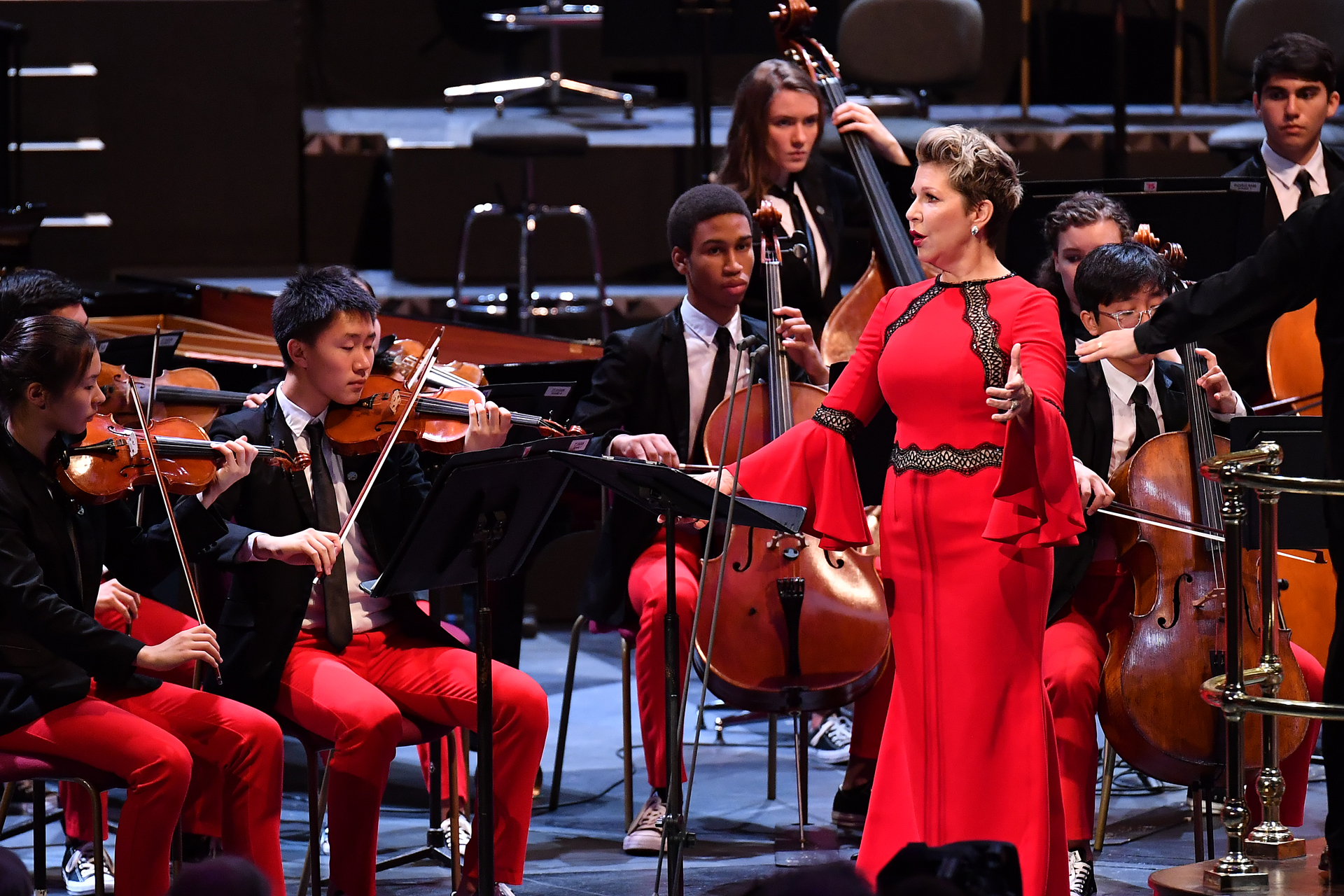Edinburgh International Festival 2019: Colin Currie Group, BBCSSO, Dausgaard/DiDonato, NYO-USA, Pappano | reviews, news & interviews
Edinburgh International Festival 2019: Colin Currie Group, BBCSSO, Dausgaard/DiDonato, NYO-USA, Pappano
Edinburgh International Festival 2019: Colin Currie Group, BBCSSO, Dausgaard/DiDonato, NYO-USA, Pappano
Experienced Scots tackle percussive Gubaidulina, young Americans in Prokofiev
With Peter Gynt, the National Theatre’s “reboot” of Ibsen’s Peer Gynt, topping the drama bill at the Edinburgh Festival hotfoot from London, it was almost obligatory to find a space somewhere in the music programme for Grieg’s famous incidental music from 1876. But what would you put in the rest of the programme?
This was a 40 minute musical and theatrical spectacle. There were more things on stage you can hit, rattle, or shake than I have ever seen before, even in the early percussion-heavy scores by James MacMillan. Two complete sets of tuned gongs, bongos, every possible incarnation of the glockenspiel-marimba family, bodhrans, woodblocks, and in front of it all five huge bass drums. Not content with that, Gubaidulina’s score demands a large orchestra with its own comprehensive percussion section, with two harps and a celeste thrown in for good measure.  This is theatrical music-making. Conductor Thomas Dausgaard seemed almost irrelevant as the Colin Currie Group (pictured above) stole the show, darting from instrument to instrument, weaving under gongs, slipping silently into each new position, exchanging mischievous glances, responding to each other’s cues with practised synergy. Large amounts of the piece are improvisatory. In these sections, led by Currie, you could see motifs evolve and blossom. In one striking passage Currie has a tuned bongo that seems to challenge a double bass to maintain a musical conversation.
This is theatrical music-making. Conductor Thomas Dausgaard seemed almost irrelevant as the Colin Currie Group (pictured above) stole the show, darting from instrument to instrument, weaving under gongs, slipping silently into each new position, exchanging mischievous glances, responding to each other’s cues with practised synergy. Large amounts of the piece are improvisatory. In these sections, led by Currie, you could see motifs evolve and blossom. In one striking passage Currie has a tuned bongo that seems to challenge a double bass to maintain a musical conversation.
It is equally a cornucopia of exotic sound such as you might hear in a film soundtrack as our hero delves deep into a hostile jungle: primaeval footsteps, unearthly rattles and eerie glissandi. Something I have never seen (or heard) before is the strangely pitchless but penetrating reverberation produced by dragging what looked like a pink lollipop across the skin of a drum.
It’s all very well creating a sonic and choreographic spectacle, but Gubaidulina’s achievement is to weave this cabinet of curiosities into an orchestral tapestry with a sense of both meaning and progression. Her gestures are spare – a rich and luscious intervention from the strings is barely two notes but hints at more, the great climax with the five bass drums filling the hall rests on a simple ascending motif. The effect is an extraordinary but satisfying experience that is a great deal more than the sum of its parts.  If you turn the question around, what would have been the best piece to partner Glorious Percussion? Some crazy Schnittke perhaps, or a late Shostakovich symphony, so the reversion after the interval to the mellifluous world of Grieg’s Peer Gynt was bound to be something of an anti-climax, for all its popularity. That said, it was exquisitely played. In its own way it is also a bit of an orchestral showcase, with glittering percussion and gorgeous woodwind solos. The BBC Scottish Symphony strings have never sounded better in the Death of Ase. In Solveig’s Song the soprano Malin Christensson (pictured above) was radiantly clear but just a little too penetrating – her demeanour not unlike an over eager hostess pressing her guest to another canapé.
If you turn the question around, what would have been the best piece to partner Glorious Percussion? Some crazy Schnittke perhaps, or a late Shostakovich symphony, so the reversion after the interval to the mellifluous world of Grieg’s Peer Gynt was bound to be something of an anti-climax, for all its popularity. That said, it was exquisitely played. In its own way it is also a bit of an orchestral showcase, with glittering percussion and gorgeous woodwind solos. The BBC Scottish Symphony strings have never sounded better in the Death of Ase. In Solveig’s Song the soprano Malin Christensson (pictured above) was radiantly clear but just a little too penetrating – her demeanour not unlike an over eager hostess pressing her guest to another canapé.
The following evening found the Usher Hall in a very different mood. Where Grieg and Gubaidulina drew, by festival standards, a thin audience, the lure of Joyce DiDonato singing Berlioz with the National Youth Orchestra of the USA was enough to fill the hall to near capacity. Like other youth orchestras, NYO-USA re-invents itself annually, with a surprisingly young age range (16-19). Dressed in vibrant red pants (as they say over the pond) and identical trainers, it looks and feels young, dynamic, and very large (pictured below with Antonio Pappano at the BBC Prom two days later). 
The orchestra halved in size for Berlioz's ultra-romantic song cycle Les nuits d’été. Joyce DiDonato (pictured below) belongs to the pantheon of superstars that even in the festival is something of a rarity in Edinburgh, and she did not for a moment disappoint. We were spellbound from the first note to the last, each song exquisitely framed both psychologically and emotionally, her gestures, facial expression, and tone perfectly matched to Berlioz’s sumptuous settings. She has a trick of throwing her head to the side, casting the voice into the wings, so that it seems to fill the hall several times over – masterful and extremely effective. Don’t miss her at the Proms on Sunday. 
rating
Explore topics
Share this article
The future of Arts Journalism
You can stop theartsdesk.com closing!
We urgently need financing to survive. Our fundraising drive has thus far raised £49,000 but we need to reach £100,000 or we will be forced to close. Please contribute here: https://gofund.me/c3f6033d
And if you can forward this information to anyone who might assist, we’d be grateful.

Subscribe to theartsdesk.com
Thank you for continuing to read our work on theartsdesk.com. For unlimited access to every article in its entirety, including our archive of more than 15,000 pieces, we're asking for £5 per month or £40 per year. We feel it's a very good deal, and hope you do too.
To take a subscription now simply click here.
And if you're looking for that extra gift for a friend or family member, why not treat them to a theartsdesk.com gift subscription?
more Classical music
 Solomon, OAE, Butt, QEH review - daft Biblical whitewashing with great choruses
Even a top soprano and mezzo can’t make this Handel paean wholly convincing
Solomon, OAE, Butt, QEH review - daft Biblical whitewashing with great choruses
Even a top soprano and mezzo can’t make this Handel paean wholly convincing
 Two-Piano Gala, Kings Place review - shining constellations
London Piano Festival curators and illustrious friends entertain and enlighten
Two-Piano Gala, Kings Place review - shining constellations
London Piano Festival curators and illustrious friends entertain and enlighten
 Echo Vocal Ensemble, Latto, Union Chapel review - eclectic choral programme garlanded with dance
Beautiful singing at the heart of an imaginative and stylistically varied concert
Echo Vocal Ensemble, Latto, Union Chapel review - eclectic choral programme garlanded with dance
Beautiful singing at the heart of an imaginative and stylistically varied concert
 Scott, Irish Baroque Orchestra, Whelan, RIAM, Dublin review - towards a Mozart masterpiece
Characteristic joy and enlightenment from this team, but a valveless horn brings problems
Scott, Irish Baroque Orchestra, Whelan, RIAM, Dublin review - towards a Mozart masterpiece
Characteristic joy and enlightenment from this team, but a valveless horn brings problems
 Classical CDs: Voice flutes, flugelhorns and froth
Baroque sonatas, English orchestral music and an emotionally-charged vocal recital
Classical CDs: Voice flutes, flugelhorns and froth
Baroque sonatas, English orchestral music and an emotionally-charged vocal recital
 Kanneh-Mason, Britten Sinfonia, Shave, Milton Court - a grin and a big beaming smile
A pair of striking contemporary pieces alongside two old favourites
Kanneh-Mason, Britten Sinfonia, Shave, Milton Court - a grin and a big beaming smile
A pair of striking contemporary pieces alongside two old favourites
 theartsdesk at the New Ross Piano Festival - Finghin Collins’ musical rainbow
From revelatory Bach played with astounding maturity by a 22 year old to four-hand jazz
theartsdesk at the New Ross Piano Festival - Finghin Collins’ musical rainbow
From revelatory Bach played with astounding maturity by a 22 year old to four-hand jazz
 First Person: Manchester Camerata's Head of Artistic Planning Clara Marshall Cawley on questioning the status quo
Five days of free events with all sorts of audiences around Manchester starts tomorrow
First Person: Manchester Camerata's Head of Artistic Planning Clara Marshall Cawley on questioning the status quo
Five days of free events with all sorts of audiences around Manchester starts tomorrow
 Goldscheider, Brother Tree Sound, Kings Place review - music of hope from a young composer
Unusual combination of horn, strings and electronics makes for some intriguing listening
Goldscheider, Brother Tree Sound, Kings Place review - music of hope from a young composer
Unusual combination of horn, strings and electronics makes for some intriguing listening
 theartsdesk Q&A: composer Donghoon Shin on his new concerto for pianist Seong-Jin Cho
Classical music makes its debut at London's K-Music Festival
theartsdesk Q&A: composer Donghoon Shin on his new concerto for pianist Seong-Jin Cho
Classical music makes its debut at London's K-Music Festival

Add comment